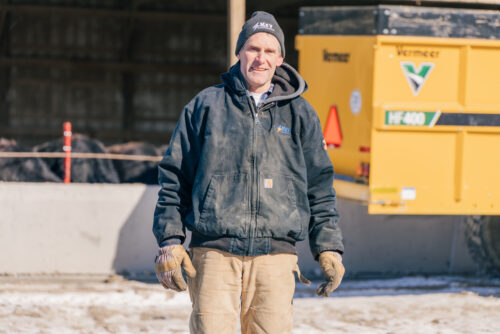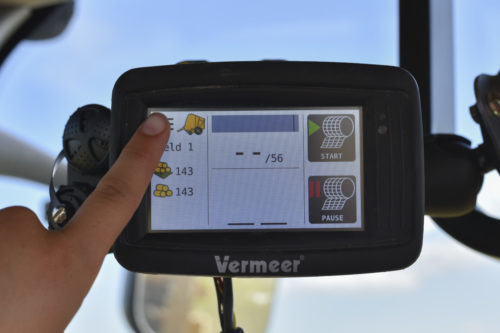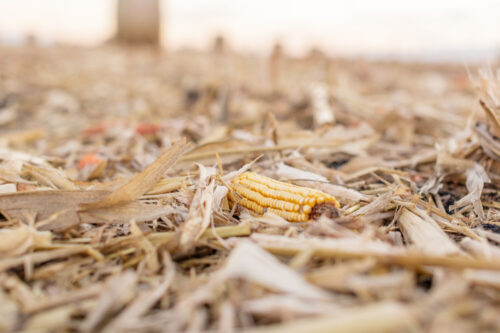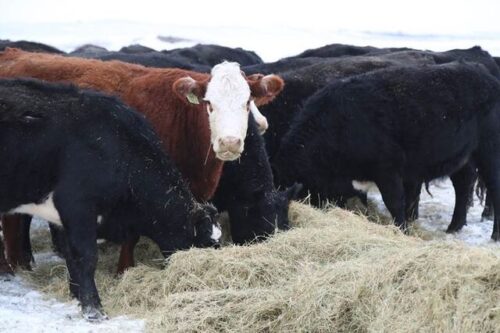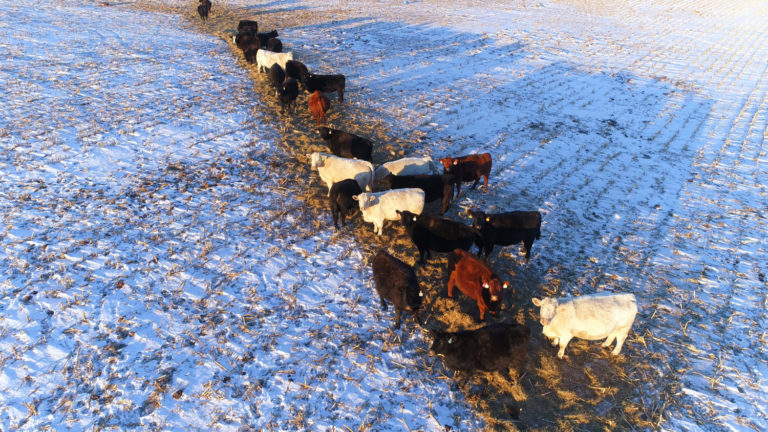
Prepping your herd for winter
September 2020
Warm gloves, check. Full inventory of coffee, check. Firewood stocked, check. The list goes on of preparations to be made as the days become shorter, the beautiful fall leaves find their way to the ground and the temperatures decrease.
For cattle producers, this checklist goes well beyond the confines of their homes. Wintering cattle in any part of the country comes with its own unique challenges. However, three things maintain — protocols on nutrition, vaccinations and shelter. Managing these three components well and utilizing the best tools available can make a difference in the productivity of a cow herd come spring.
Last winter brought below-freezing temperatures and above-average snowfall in most of the country, leaving producers with a massive challenge. According to the Farmers’ Almanac, the challenge will persist this year. Dubbed the “polar coaster,” this winter is predicted to bring frigid temperatures, strong winds and increased moisture to the eastern third of the county. In the meantime, the other part of the country may not be as wet, but it will still encounter cooler-than-normal temperatures.
With a lengthy and harsh winter forecast in mind, now is the time to begin implementing a winter management plan, so the cow herd is not left in the cold. Cody Wright, South Dakota State University professor of animal science, says there are many considerations to note when it comes to managing cattle in the winter months.
"With a lengthy and harsh winter forecast in mind, now is the time to begin implementing a winter management plan, so the cow herd is not left in the cold."As the cool breeze becomes cold, it is undoubtedly time to evaluate the body condition score (BCS) of cattle. According to Wright, a BCS of five to five and a half is adequate for mature cows, bred for their third calf, or six to six and a half for younger cows during late gestation. The recommended approach is to be proactive in reaching the appropriate BCS before winter hits and stockpiling enough high-quality feedstuffs to maintain the BCS through those months.
Testing those feedstuffs to ensure the nutrition value is accurate is highly recommended since all feed sources are not created equal. “The requirements will go up during that last 90 days prior to calving,” he explains. “The increase in nutrient demands is pretty significant. Making sure you understand which feeds you have available, and how can you use those strategically to keep your costs down becomes a really important thing to do.”
Further, Wright recommends aiming to sort cattle into smaller groups to allow for a higher degree of management and less competition for feedstuffs. This is also an opportune time to consider if they have the necessary feeding tools to minimize feed waste. The Vermeer BPX9010 bale processor can help distribute a consistent, uniform windrow of crop along the bunk line or out in the pasture allowing for less competition among the herd, helping to ensure each cow gets adequate nutrition. In addition to serving as a feeding tool, the Vermeer BPX9010 bale processor can also serve as a tool to help operators bed their cattle when the temperatures drop, helping producers spread bedding at ranges of up to 50 feet (15.2 m).
In unison, a vaccination protocol is not something to be taken lightly. Wright encourages partnering up with a local veterinarian to discuss the needs of the herd and environment. Given the situation, the veterinarian can aid in developing a 12-month protocol which protects the herd against common diseases to the area.

With strong winds expected to blow through most of the United States, having a place for cattle to take shelter is paramount. “When we’re going to get well below zero in multiple occasions with the wind chill, keeping the cattle protected from that wind becomes absolutely essential,” Wright stresses.
He notes creating a shelterbelt with trees, using temporary windbreaks or panels are all viable options. Stacking bales is also another option Wright points to, but at the end of the day it all comes down to proper planning. From nutrition and water availability to herd health and shelter, it all works in concert to ensure success with a beef cattle enterprise.
“There are a lot of considerations,” he says. “It takes time to plan ahead. It’s going to take time to implement the plan, but if you can save one calf, that’s a pretty significant return on investment.”
Nutrition, vaccinations and shelter are like a three-legged stool. If one leg goes out, the stool falls hard — don’t let your cow herd fall hard to winter this year.
This article was written by Kayla Jennings for Makin’ Hay.
This article contains third-party observations, advice or experiences that do not necessarily reflect the opinions of Vermeer Corporation, its affiliates or its dealers. Individual results may vary based on care and operation of machine and crop and field conditions, which may adversely affect performance.
Vermeer Corporation reserves the right to make changes in engineering, design and specifications; add improvements; or discontinue manufacturing at any time without notice or obligation.
Equipment shown is for illustrative purposes only and may display optional accessories or components specific to their global region. Please contact your local Vermeer dealer for more information on machine specifications.
Vermeer and the Vermeer logo are trademarks of Vermeer Manufacturing Company in the U.S. and/or other countries.
© 2019 Vermeer Corporation. All Rights Reserved.


